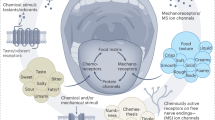Abstract
THE composition of the larval foods of the honeybee has evoked considerable interest among research workers1–4. Honeybee larvæ are fed a jelly-like secretion of the head glands of nurse bees, who deposit it in the cell of the comb. Since the caste determination is influenced by nutrition5 and presumably occurs before the third day of the larval life, the chemical composition of the foods fed to the young (1–3 days old) and old (4–6 days old) larvæ have received some added attention. Considerable variation has been reported in the carbohydrate2, protein6, lipid1,3, pteridine4, and other chemical constituents of the larval foods1. Whether larval foods can influence sex modification is still not certain.
This is a preview of subscription content, access via your institution
Access options
Subscribe to this journal
Receive 51 print issues and online access
$199.00 per year
only $3.90 per issue
Buy this article
- Purchase on Springer Link
- Instant access to full article PDF
Prices may be subject to local taxes which are calculated during checkout
Similar content being viewed by others
References
Patel, N. G., Haydak, M. H., and Lovell, R., Nature, 191, 362 (1961).
Christensen, G. M., Nature, 195, 74 (1962).
Weaver, N., and Law, T. H., Nature, 188, 938 (1960).
Rembold, H., and Hauser, G. H., Z. Physiol. Chem., 317, 203 (1960).
Smith, M. V., Cornell Univ. Agric. Exp. Stat. Mem., 365 (1959).
Patel, N. G., Haydak, M. H., and Gochnauer, T. A., Nature, 186, 633 (1960).
Williams, R. H., Textbook of Endocrinol., edit. by Williams, R. H., 559 (W. B. Saunders Co., Philadelphia and London, 1962).
Scott, D. A., and Fisher, A. M., Amer. J. Physiol., 121, 253 (1938).
Renold, A. E., Martin, D. B., Dagenais, Y. M., Steinke, J., Nickerson, R., and Sheps, M. D., J. Clin. Invest., 39, 1487 (1960).
Dixit, P. K., Lowe, I., Heggestad, C. B., and Lazarow, A., Diabetes, 13, 71 (1964).
Dixit, P. K., Lowe, I., and Lazarow, A., Nature, 195, 388 (1962).
Winegrad, A. I., Shaw, W. N., Lukens, F. D. W., Stadie, W. C., and Renold, A. E., J. Biol. Chem., 234, 1922 (1959).
Mirsky, I. A., and Perisutti, G., Endocrinol., 71, 158 (1962).
Winegrad, A. I., Shaw, W. N., Lukens, F. D. W., and Stadie, W. C., J. Biol. Chem., 234, 3111 (1959).
Lee, H. M., Ellis, R. M., and Bromer, W. W., Proc. Soc. Exp. Biol. Med., 104, 4 (1960).
Lynn, W. S., MacLeod, R. M., and Brown, R. H., J. Biol. Chem., 235, 1904 (1960).
Grodsky, G., and Tarver, H., Nature, 177, 223 (1956).
Author information
Authors and Affiliations
Rights and permissions
About this article
Cite this article
DIXIT, P., PATEL, N. Insulin-like Activity in Larval Foods of the Honeybee. Nature 202, 189–190 (1964). https://doi.org/10.1038/202189a0
Issue Date:
DOI: https://doi.org/10.1038/202189a0
This article is cited by
-
Effects of royal jelly supplementation on glycemic control and oxidative stress factors in type 2 diabetic female: A randomized clinical trial
Chinese Journal of Integrative Medicine (2014)
-
Proteome analysis of Apis mellifera royal jelly
Analytical and Bioanalytical Chemistry (2007)
-
Testosterone in royal jelly
Experientia (1984)
-
Blood meal as a regulator of triacylglycerol synthesis in the haematophagous stable fly,Stomoxys calcitrans
Journal of Comparative Physiology ? B (1982)
Comments
By submitting a comment you agree to abide by our Terms and Community Guidelines. If you find something abusive or that does not comply with our terms or guidelines please flag it as inappropriate.



